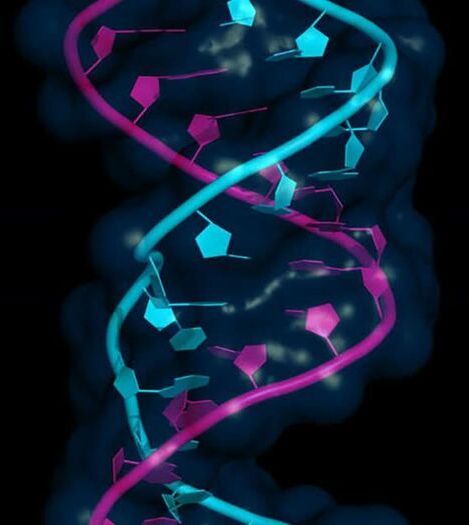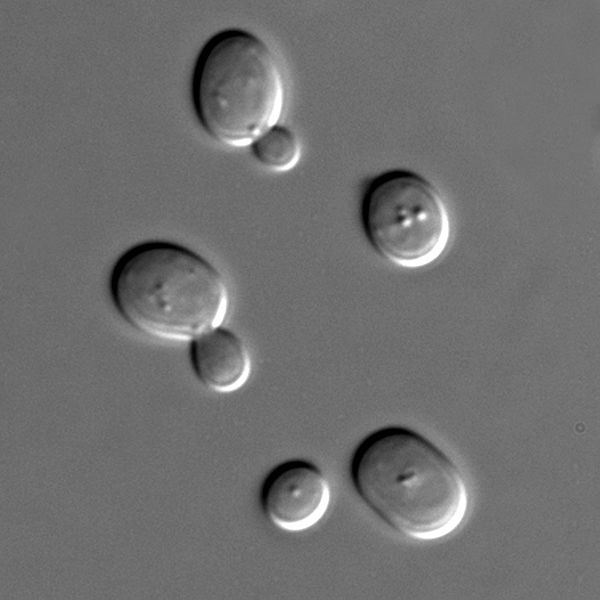Experts predict that we’ll be able to live up to 20% longer over the next 100 years. Here’s how humans are trying to live forever. Andrea Schmitz and Benji Jones Apr 3, 2019, 12:00 PM @ These potential treatments for aging could unlock cures to a range of age-related illnesses, from cancer to heart disease – Charlotte Hu Aug 20, 2018, 1:21 PM @ Animals that defy the rules of aging — like naked mole rats — could help scientists unravel the secrets to longevity – Charlotte Hu Aug 15, 2018, 2:54 PM @ Everything you thought you knew about aging is wrong – Erin Brodwin Apr 27, 2016, 12:13 PM *© 2021 Insider Inc. @ Other very important information, images, YouTube Videos (Ray Kurzweil – Physical Immortality – 3 de jan. de 2017 & Ray Kurzweil + Disruptive Technologies and Dangerous Ideas – 5 de dez. de 2017), websites, social networks and links.
Category: biotech/medical – Page 1,837

How mRNA technology is altering vaccine treatments
“Well, it has to do with our technology,” said Hoge. “We use something called messenger RNA, or mRNA for short. It’s really just an instruction molecule, kind of like a software program for your cells. It just sends instructions about what the virus looks like to your immune system. So just like a software program, or a Word document, we can simply edit something, change it, and then manufacture it very, very quickly.”
He makes it sound so easy, but it’s taken more than a decade of research, and many technological hurdles. Now, the company has some big plans. “We’ve had an incredible year using messenger RNA to fight a pandemic,” Hoge said. “But we think we’re just starting in the infectious disease space, And so, there’s a large number of other vaccines we’re bringing forward.”
Moderna’s research pipeline includes everything from an HIV vaccine, to heart disease treatments, to vaccines for different kinds of cancer, including lymphoma and melanoma.

Nanobots could navigate through blood vessels to target cancers and clear blood clots
Nanobots, tiny nano-sized robots and vehicles that can navigate through blood vessels to reach the site of a disease could be used to deliver drugs to tumours that are otherwise difficult to treat.
Once injected or swallowed, most drugs rely upon the movement of body fluids to find their way around the body. It means that some types of disease can be difficult to treat effectively in this way.
One aggressive type of brain tumour known as glioblastoma, for example, kills hundreds of thousands of people a year. But because it produces finger-like projections into a patient’s brain tissue that damage the blood vessels around them, it is hard for drugs to reach the tumour site.
Felix Werth: The rejuvenation field in the ballot in Germany
Hello everybody! In this episode, we interview Felix Werth, a trully hero of the rejuvenation field: in 2015 he created a party in Germany to defend more investments in our field, and his party is contesting the general elections in the country on September 26th 2021! However, he needs our help right now, since his party has until July 19th to collect enough signatures to participate in 14 German states covering 98% of the country’s population. So be sure to check the interview and the party’s website (https://parteifuergesundheitsforschung.de) to see how you can help.
In this episode of ImmortaliCast, Nicolas and Nina talk to Felix Werth, the founder and leader of the German Party for Health Research, a party with a single issue: 10% of the government budget should be spent on research for the development of treatments of age-related diseases. The party will contest the German general elections of September 26th 2021.
Party for Health Research website: https://parteifuergesundheitsforschung.de.
Fundraising page: https://parteifuergesundheitsforschung.de/superwahljahr-spendenaktion.
ImmortaliCast website: https://www.ntzplural.com/immortalicast.
CaAKG — The Science Behind Rejuvant | Tom Weldon Interview Series Part I
This product came out months ago with some shocking numbers as to effect. But those effects were in mice tests. 10–20% increase in lifespan and 55% increase in healthspan. It is AKG, Rejuvant, it’s a product you can buy now. There will be a part 2 of this interview so I hope to hear about human data.
Here we present an interview with Tom Weldon the founder and CEO of Ponce de Leon Health, which makes Rejuvant a Calcium AKG based supplement. In this video Tom talks through the process and reasons for selecting CaAKG. He also talks about some of the other results that they found in their tests, especially with respect to mixing different supplements and their combined effects.
This it part 1 of a two part series. In part 2 we talk about his personal experience and on going clinical trials. With that let me start the interview.
Links to Rejuvant.
https://www.rejuvant.com/
Ponce de Leon Health.
The paper from the Buck institute mentioned in the call.
The longevity sirtuin – what you need to know about SIRT6
There are Sirt6 activators on the market, but since we are not seeing any major news about results I would question their value.
SPONSOR: Longevity. Technology — https://www.longevity.technology/?utm_source=SSS&utm_medium=…aign=Sirt6
Sirtuins are highly conserved proteins that are involved in a variety of important cellular processes such as DNA repair, metabolism and circadian rhythms. The mammalian sirtuins (SIRT1-7) are a family of proteins that carry out NAD+-dependent protein deacylation and mono-ADP-ribosylation. These modifications on proteins can influence their stability, localisation within a cell and activity.
In the late 90s interest in sirtuins bloomed as it was found yeast lived 30% longer when they had an additional copy of a yeast sirtuin, Sir2. Similar studies have now been performed in mice, but whilst overexpression of SIRT1 in mice does not result in lifespan extension, overexpression of SIRT6 does. This has led to SIRT6 being referred to as the longevity sirtuin. However, there seems to be some sex-and mouse strain-dependent differences. So, in the remainder of the video, we will discuss what you need to know about SIRT6 including it’s proposed cellular activities, it’s association with longevity and how SIRT6 activation using allosteric activators could have future therapeutic potential.
TIMESTAMPS:

Scientists Prepare for Next Coronavirus Pandemic, Maybe in 2028?
CHICAGO, IL — Scientists are already preparing for a possible next coronavirus pandemic to strike, keeping with the seven-year pattern since 2004.
In future-looking research, Northwestern University Feinberg School of Medicine scientists have identified a novel target for a drug to treat SARS-CoV-2 that also could impact a new emerging coronavirus.
“God forbid we need this, but we will be ready,” said Karla Satchell, professor of microbiology-immunology at Feinberg, who leads an international team of scientists to analyze the important structures of the virus. The Northwestern team previously mapped the structure of a virus protein called nsp16, which is present in all coronaviruses. This new study provides critical information that could aid drug development against future coronaviruses as well as SARS-CoV-2.

Cells optimized to improve healthy ageing compound
The population on Earth is increasingly growing and people are expected to live longer in the future. Thus, better and more reliable therapies to treat human diseases such as Alzheimer’s and cardiovascular diseases are crucial. To cope with the challenge of ensuring healthy aging, a group of international scientists investigated the potential of biosynthesising several polyamines and polyamines analogs with already known functionalities in treating and preventing age-related diseases.
One of the most interesting molecules to study was spermidine, which is a natural product already present in people’s blood and an inducer of autophagy that is an essential cellular process for clearing damaged proteins, e.g., misfolded proteins in brain cells that can cause Alzheimer’s. When people get older the level of spermidine in the blood decrease and dietary supplements, or certain food products are needed to maintain a stable and high level of spermidine in the blood. However, those products are difficult to produce with traditional chemistry due to their structural complexity and extraction of natural resources is neither a commercially viable nor a sustainable approach.
Therefore, the researchers instead decided to open their biochemical toolbox and use classical metabolic engineering strategies to engineer the yeast metabolism to produce polyamines and polyamines analogs.

Anti-aging protein in red blood cells helps stave off cognitive decline
Research conducted by Qiang et al has discovered a link between a protein in red blood cells and age-related decline in cognitive performance. Published in the open access journal PLOS Biology on 17th June 2021, the study shows that depleting mouse blood of the protein ADORA2B leads to faster declines in memory, delays in auditory processing, and increased inflammation in the brain.
As life expectancies around the world increase, so are the number of people who will experience age-related cognitive decline. Because the amount of oxygen in the blood also declines with age, the team hypothesized that aging in the brain might be naturally held at bay by adenosine receptor A2B (ADORA2B), a protein on the membrane of red blood cells which is known to help release oxygen from the blood cells so it can be used by the body. To test this idea, they created mice that lacked ADORA2B in their blood and compared behavioral and physiological measures with control mice.
The team found that as the mice got older, the hallmarks of cognitive decline—poor memory, hearing deficits, and inflammatory responses in the brain—were all greater in the mice lacking ADORA2B than in the control mice. Additionally, after experiencing a period of oxygen deprivation, the behavioral and physiological effects on young mice without ADORA2B were much greater than those on normal young mice.